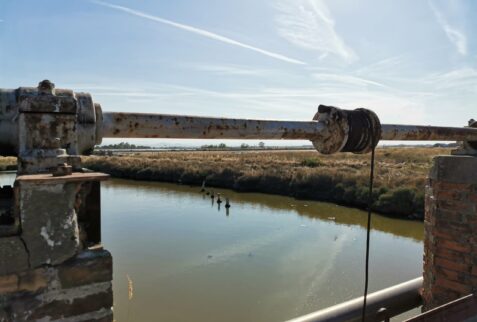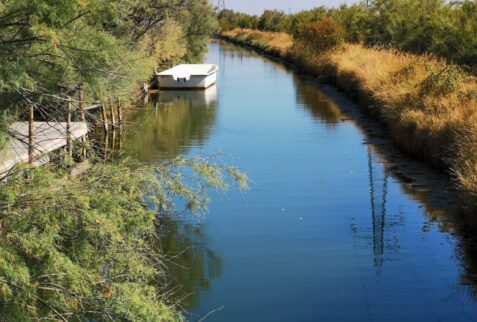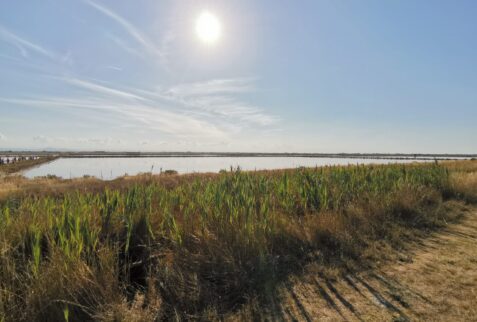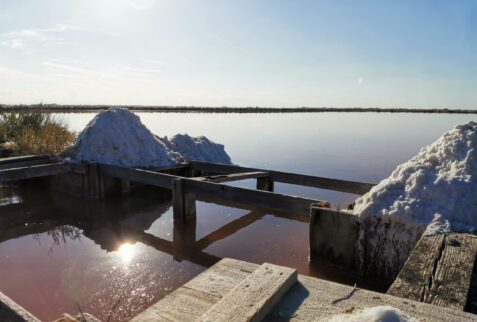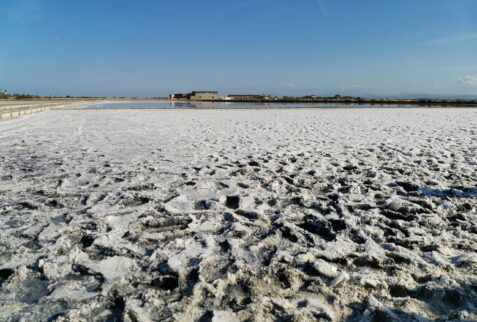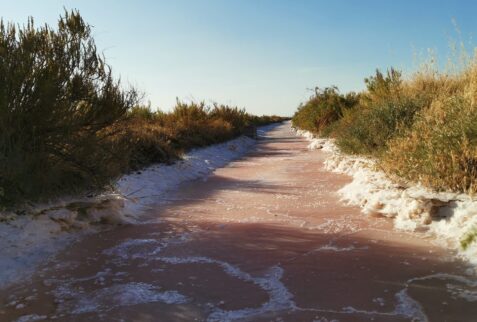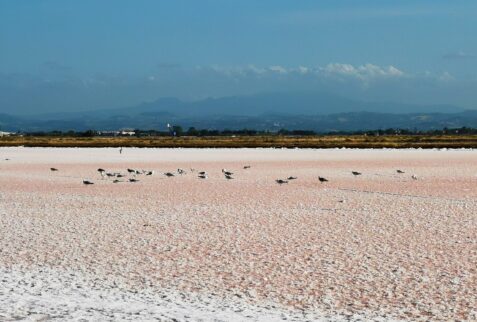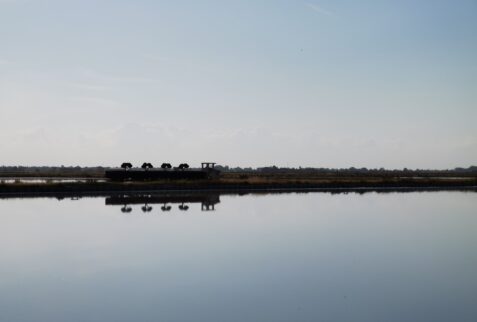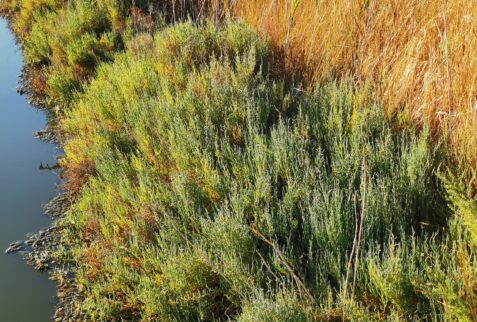Cervia Salt Pan
Salina di Cervia (Cervia Salt Pan) is the northernmost salt pan in Italy and is located in the Po Delta Regional Park.
This salt pan is known all over the world for “sweet salt” production. Although apparently combining the word “salt” with the word “sweet” may seem counterintuitive, actually it is not. The opposite of “salty” is “tasteless”, while the opposite of “sweet” is “bitter”. The reason for the term “sweet” for Cervia salt is to be found in the technique used to collect the salt. In the salt pans located in the south of Italy, the high summer temperature leads to the rapid and total evaporation of the water present in the last tanks of the salt pan (those in which there is the greatest salt concentration in the water). The result is that, together with the salt, the chlorides (naturally present in the water) are also deposited, which give the salt its bitter taste. In the Cervia salt pan, however, being further north of Italy, it benefits from reduced sun exposure. The water in the last tanks, therefore, cannot evaporate completely and is removed with special ducts. This way, the bitter chlorides contained in the water don’t have time to settle and what remains is a sweeter tasting salt.
The history of the Cervia salt pans is very ancient, with the origins dating back to the third century BC, a period in which the Romans entered the Po Valley. The salt pans were for most of the time under the control of the Papal State, with brief alternations of other domains, until 1859, when the temporal power of the Papal State ended and the salt flats became State Monnopolio. At the beginning of the nineties, the State Monopoly dismissed the salt pans of Cervia which returned to operation in 2002 when the Società del Parco della Salina di Cervia was founded.
Admiring the salt pans up close, understanding how salt production takes place by combining ancient techniques with more modern machinery is a unique emotion. During the visit to the salt pan, it is possible to try walking in the salt and using silt, which forms the insulating substrate on which the salt pan works.
If you want more information please contact us using the info box!
To see the image description hold on the mouse pointer on the relative image.

